Abstract
When Euglena gracilis is cultured with light of low intensity (ca. 250 ft-c), an absorption band at 695 mμ is formed in an amount equal to about 20 per cent of the total chlorophyll absorption in this red region. An equally large proportion of Ca695 is observed in Ochromonas danica, irrespective of light intensity. Other algae tested appear to contain approximately 3 to 5 per cent of their chlorophyll as Ca695; this proportion does not increase as strikingly with lowering of the light intensity as it does in Euglena. Ca695 bleaches more readily than the other chlorophyll forms both reversibly, in whole cells, and irreversibly, in homogenates. Cells containing a large proportion of Ca695 have a fluorescence maximum at 708 mμ, as contrasted to the 687 mμ maximum in other algae. Occasionally, old cultures of Euglena contain cells with an absorption band at approximately 710 mμ. This absorption band is quite stable in aqueous extracts; when the pigment is transferred to ether an equivalent amount of pheophytin a is found to be present. Conditions leading to the formation of the 710 mμ absorption band are not yet known.
Full text
PDF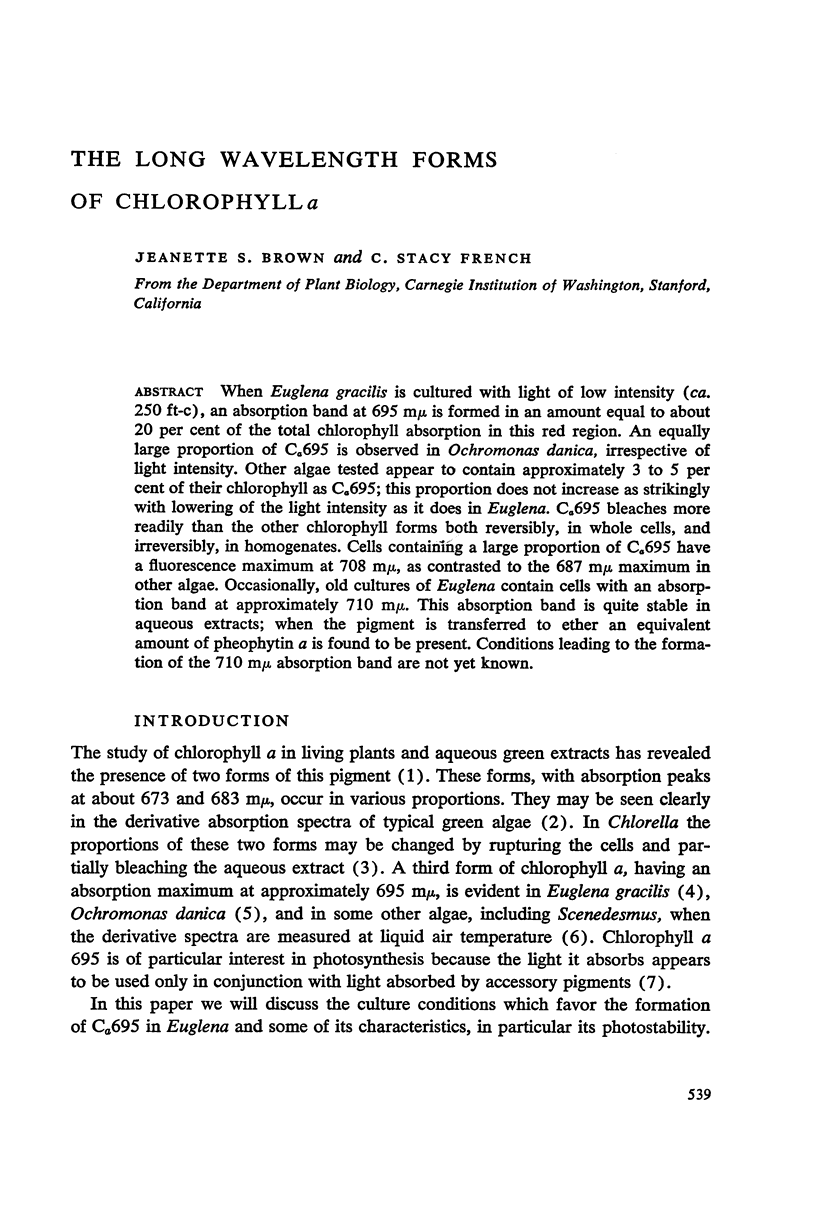
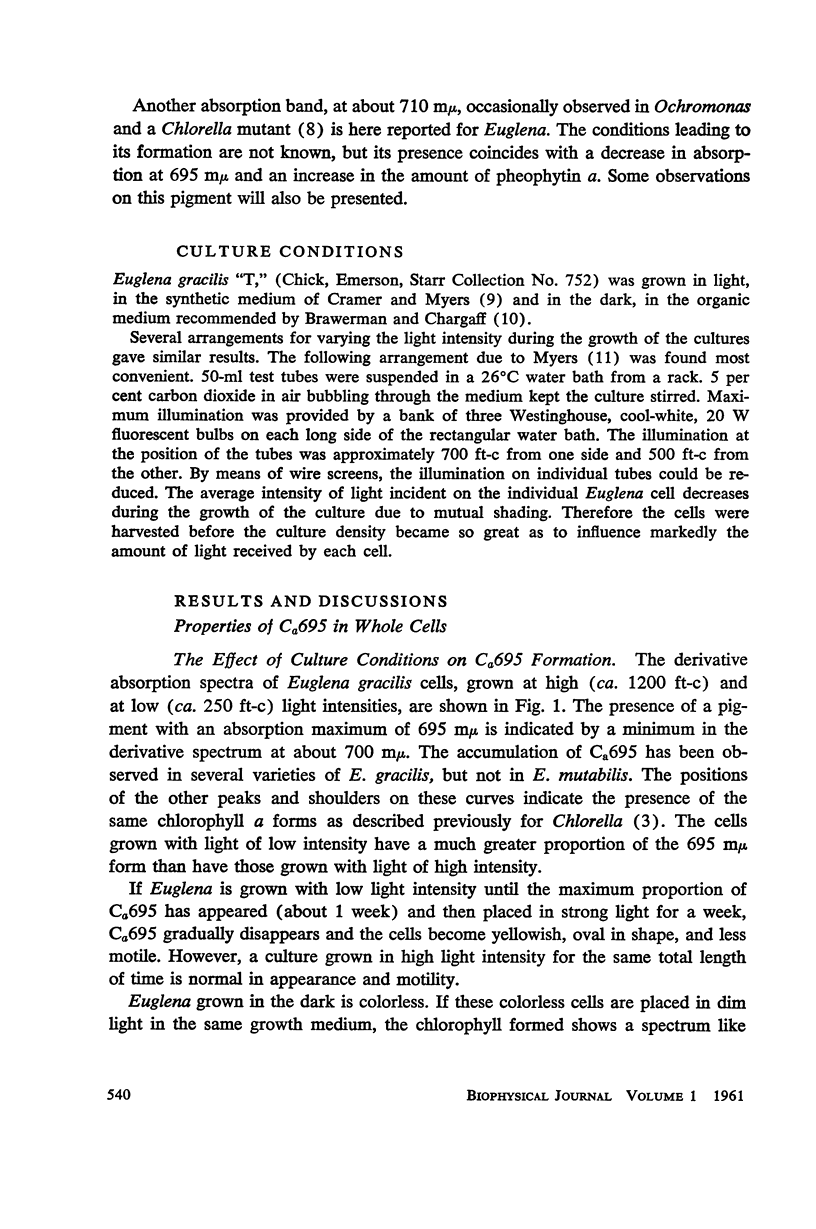
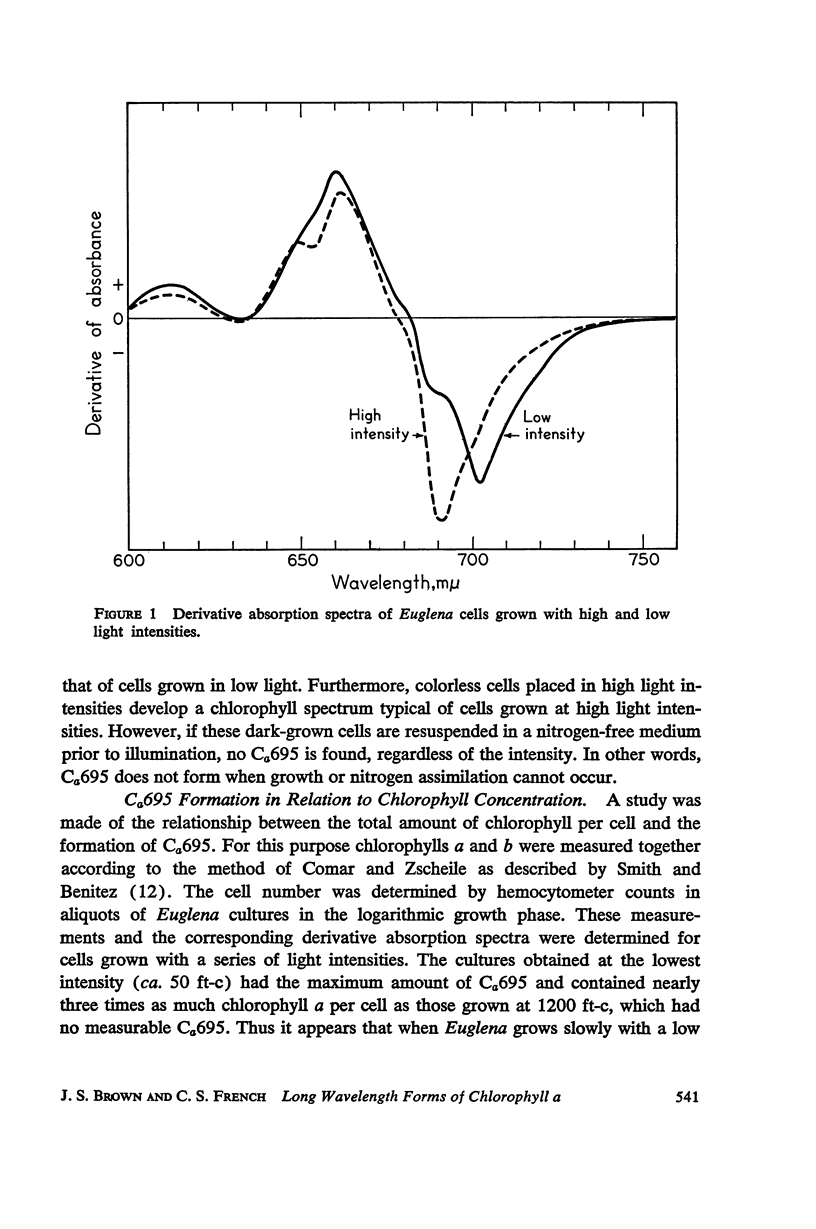
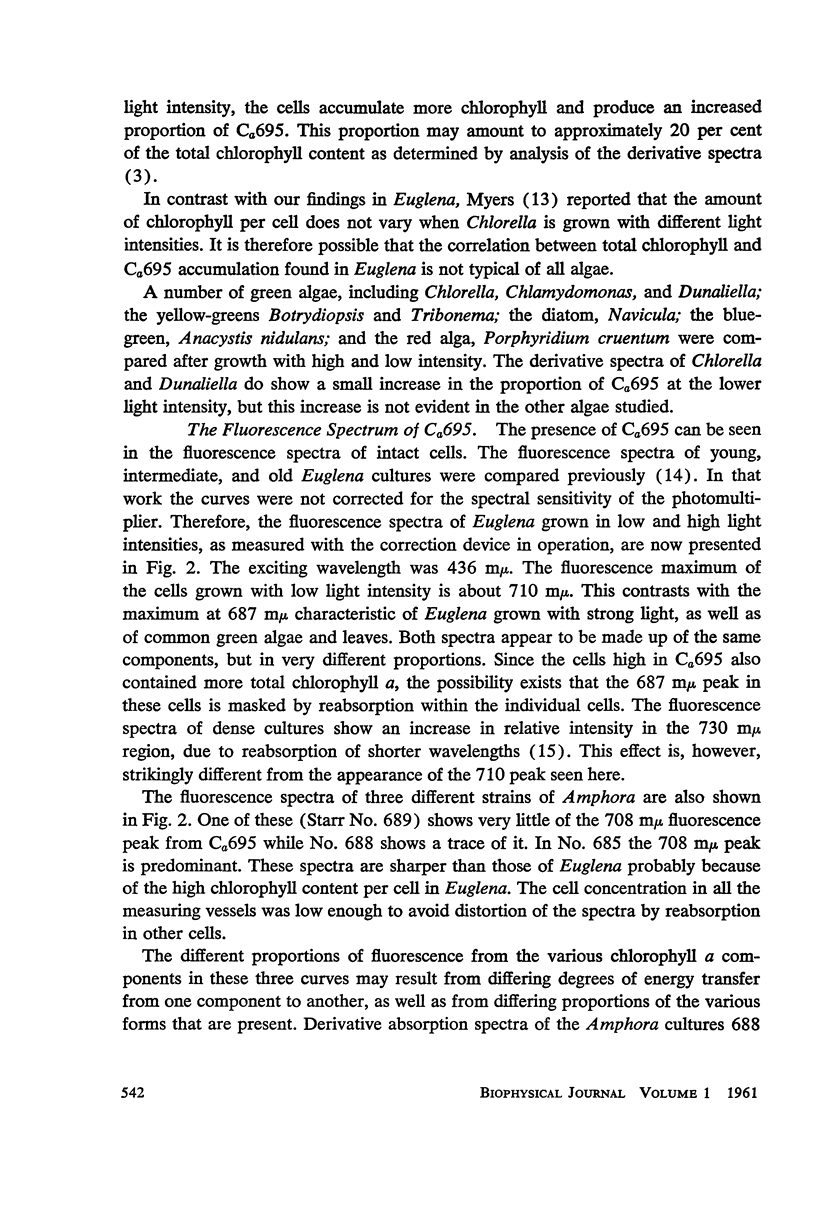
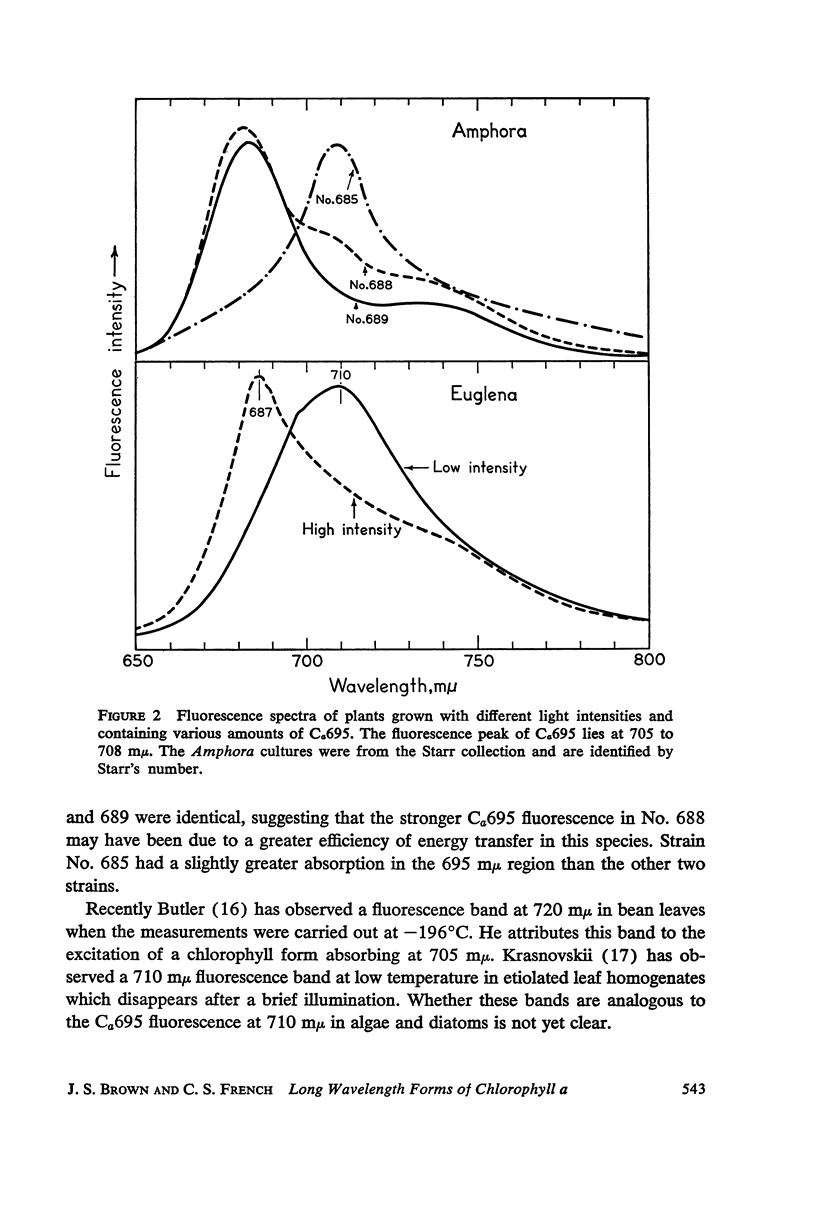
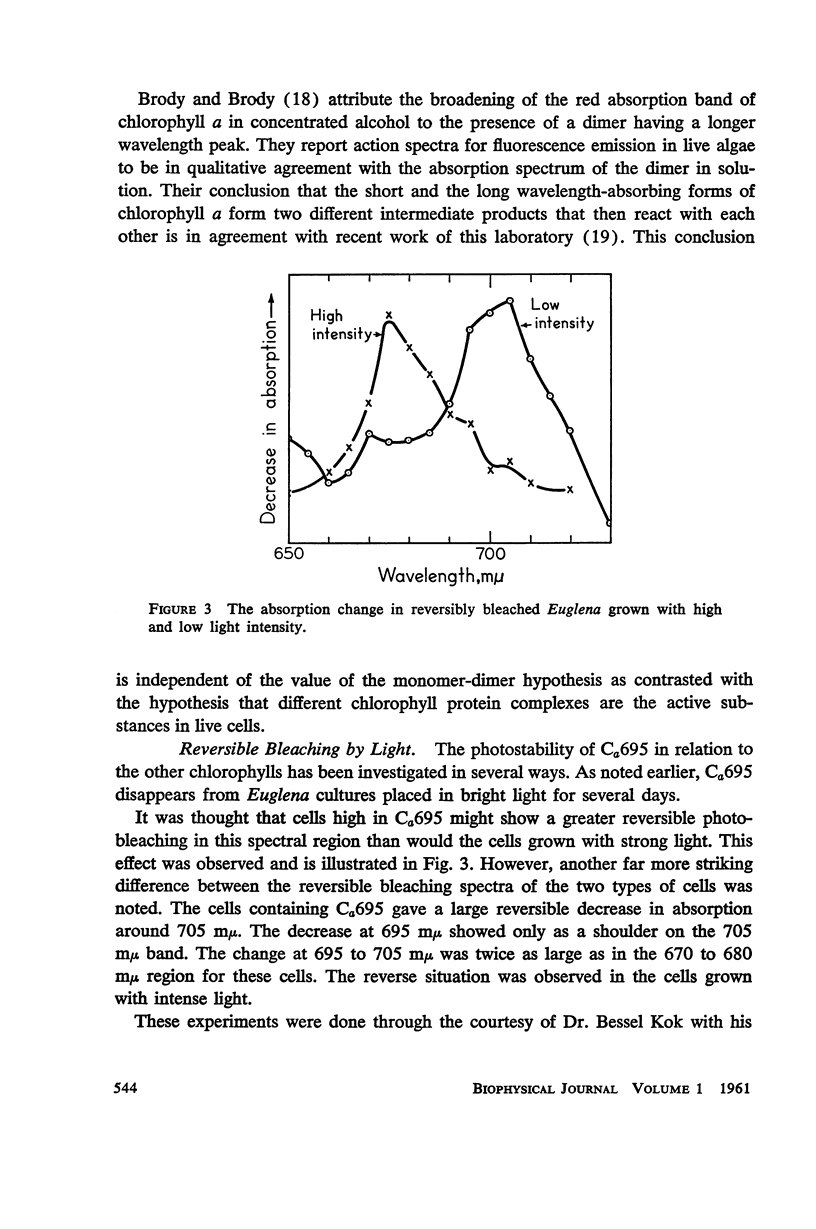
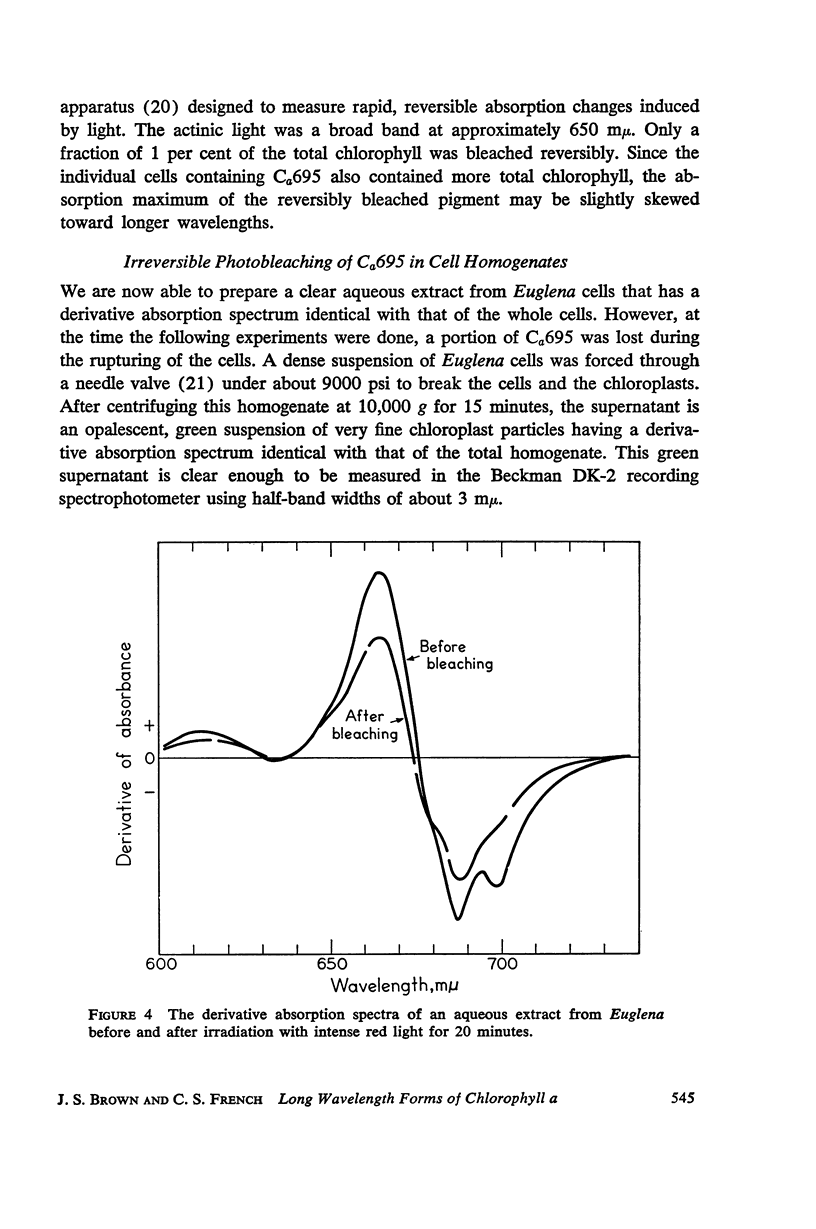

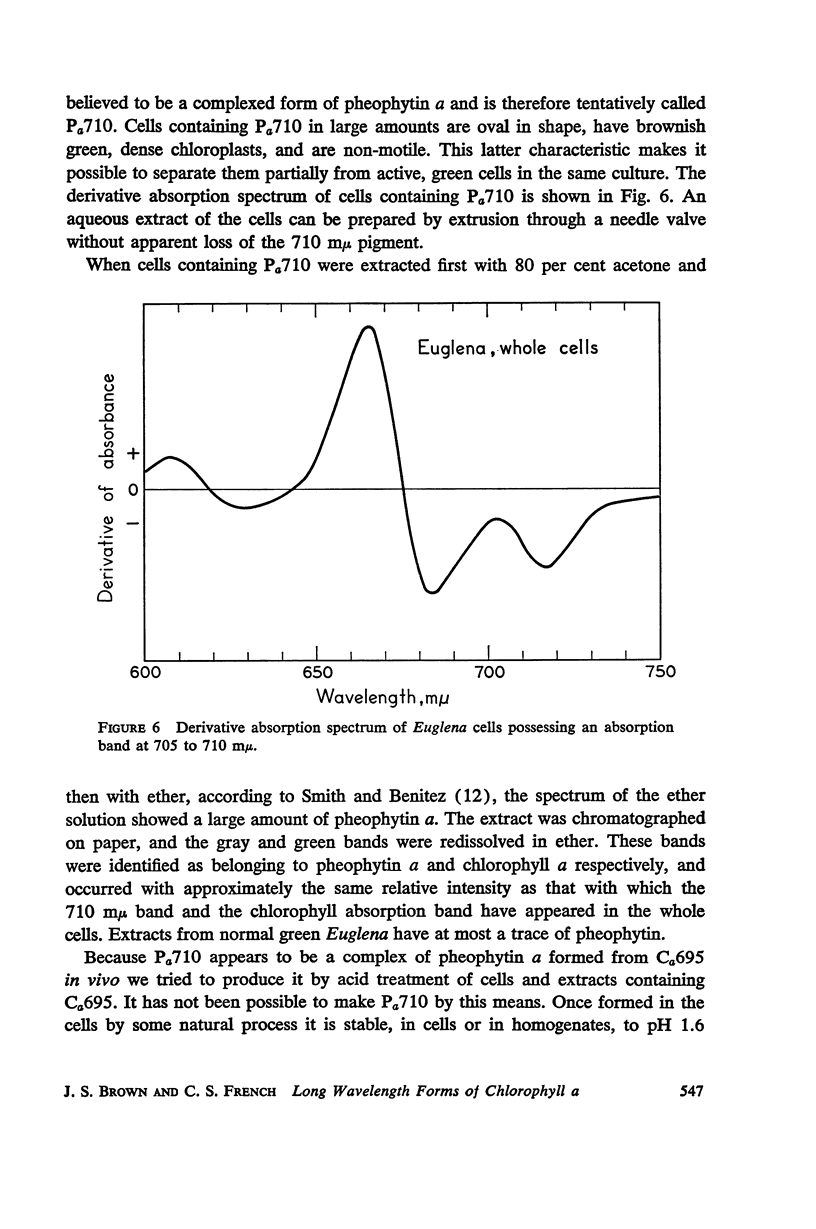
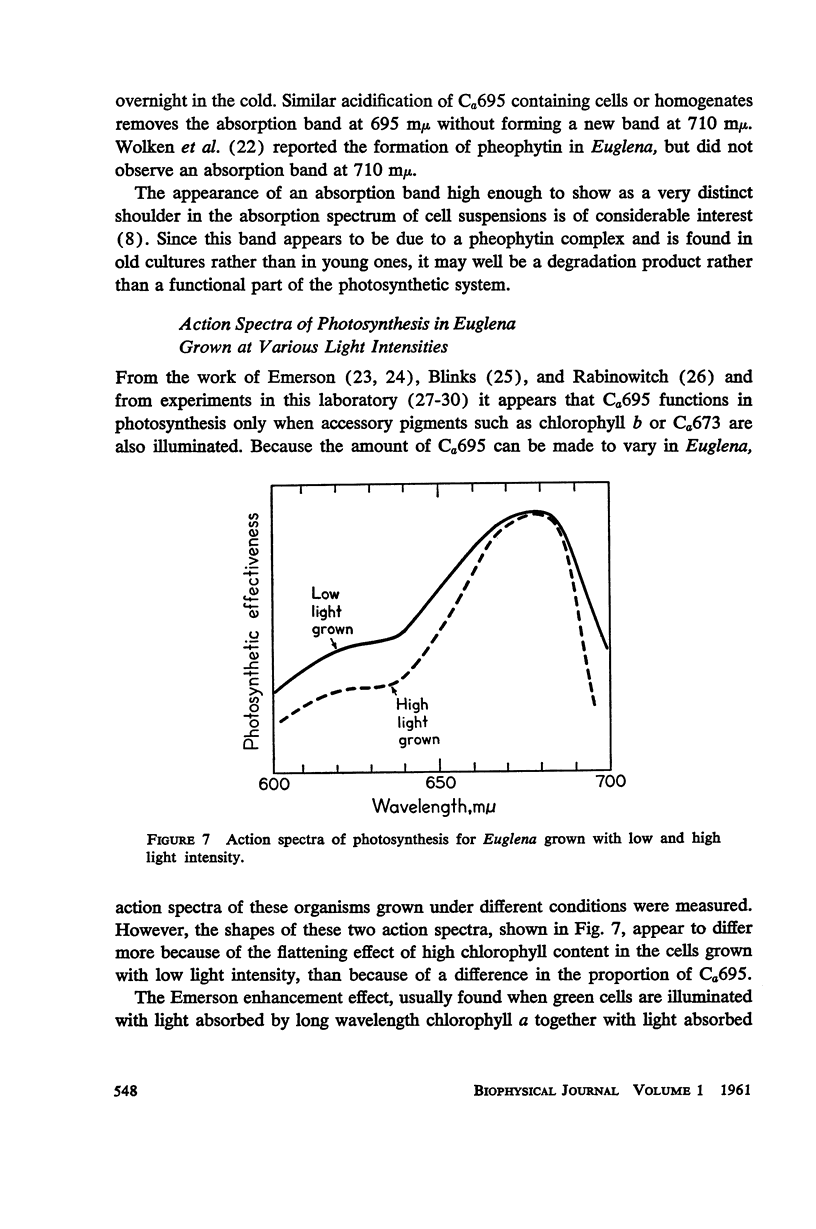

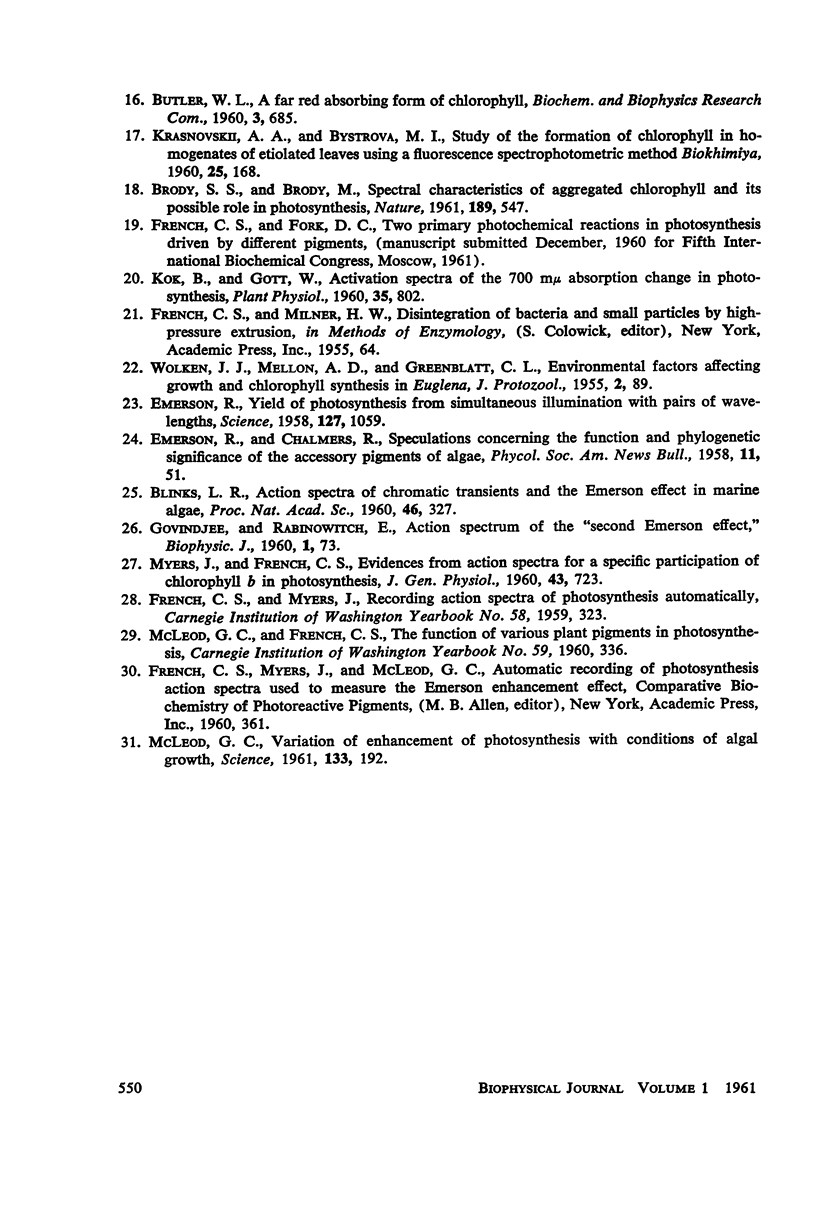
Selected References
These references are in PubMed. This may not be the complete list of references from this article.
- BRAWERMAN G., CHARGAFF E. Changes in protein and ribonucleic acid during the formation of chlorplasts in Euglena gracilis. Biochim Biophys Acta. 1959 Jan;31(1):164–171. doi: 10.1016/0006-3002(59)90452-4. [DOI] [PubMed] [Google Scholar]
- BUTLER W. L. A far red absorbing form of chlorophyll. Biochem Biophys Res Commun. 1960 Dec;3:685–688. doi: 10.1016/0006-291x(60)90087-5. [DOI] [PubMed] [Google Scholar]
- Brown J. S., French C. S. Absorption Spectra and Relative Photostability of the Different Forms of Chlorophyll in Chlorella. Plant Physiol. 1959 May;34(3):305–309. doi: 10.1104/pp.34.3.305. [DOI] [PMC free article] [PubMed] [Google Scholar]
- KRASNOVSKII A. A., BYSTROVA M. I. [Studies on chlorophyll synthesis in homogenates of etiolated leaves by means of a fluorescence spectrophotometric method]. Biokhimiia. 1960 Jan-Feb;25:168–179. [PubMed] [Google Scholar]
- Kok B., Gott W. Activation Spectra of 700 mmu Absorption Change in Photosynthesis. Plant Physiol. 1960 Nov;35(6):802–808. doi: 10.1104/pp.35.6.802. [DOI] [PMC free article] [PubMed] [Google Scholar]
- MCLEOD G. C. Variation of enhancement of photosynthesis with conditions of algal growth. Science. 1961 Jan 20;133(3447):192–193. doi: 10.1126/science.133.3447.192. [DOI] [PubMed] [Google Scholar]
- MYERS J., FRENCH C. S. Evidences from action spectra for a specific participation of chlorophyll b in photosynthesis. J Gen Physiol. 1960 Mar;43:723–736. doi: 10.1085/jgp.43.4.723. [DOI] [PMC free article] [PubMed] [Google Scholar]


